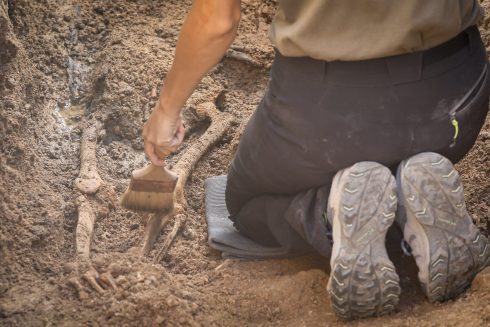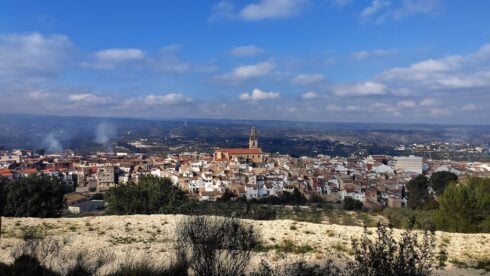A SERIES of excavations have unearthed the harrowing remains of dozens of victims of the Franco regime in a ravine of ‘horror, death, and tragedy’.
A third excavation in the Viznar site, just a handful of kilometres north-east of Granada city, revealed 44 skeletal remains to go with the 49 found in other nearby mass graves
All of them showed signs of violent death, often from gunshot wounds to the head, and bore marks of torture prior to execution
The fieldwork, which commenced in mid-April under the leadership of archaeology professor Francisco Carrion from Granada University, will now take to the laboratory to study the historical, anthropological, forensic, archaeological, and sociological circumstances surrounding these crimes.
At the same time, DNA samples are being taken to try to identify the victims, with the Junta directly informing the families when able to do so.
Originally, there were insufficient funds for further excavations at the site, but the team received welcome news earlier this summer in the form of additional funding from public sources dedicated to resolving the crimes of the Franco era.
The Ministry of the Presidency, Relations with the Cortes, and Democratic Memory pledged around €140,000 for Granada, with €100,000 designated for the Viznar ravine.
This new funding complements another €70,000 from the Commissioner for Memory of the Ministry of Culture of the Junta de Andalucía.

The intention is to resume excavations by the end of the year and continue until next summer, in a bid to cleanse the ravine, transforming it into a place of memory but one devoid of victims in mass graves, according to the project’s director.
In addition to this, Carrion’s team is gearing up for an excavation campaign at another Historic Memory Site in the province, the Barranco del Carrizal in Orgiva, Granada.
Trucks loaded with prisoners arrived at this location to be executed and have their bodies discarded, with an estimated hundreds of individuals buried there.
Many of the Republicans interred at this site hailed from the surrounding towns, the Granada coast, and others fleeing the Desbandá from Málaga.
During the Franco era in Spain, tens of thousands of people were killed, and many of them were buried in mass graves.
In Paterna, a small city outside Valencia, an estimated 2,238 victims of Franco’s repression were dumped in pits.
The work to exhume and identify victims in Paterna is part of a larger national reckoning in Spain with its past under the Franco dictatorship.
In 2020, a bill was approved to finance exhumations from unmarked graves as part of a wider effort to find out the truth about the dictatorship’s crimes and heal wounds still open decades after Franco’s death.
READ MORE:
- Andalucia academic slams Spain’s policy of denying Gibraltar its territorial waters as a Franco legacy
- Catalunya mass graves discovered of foreign fighters who resisted Franco’s forces in Spain’s Civil War
- Despite exhumation from war monument, Franco and his new resting place are still costing the Spanish state €10,000 a year








